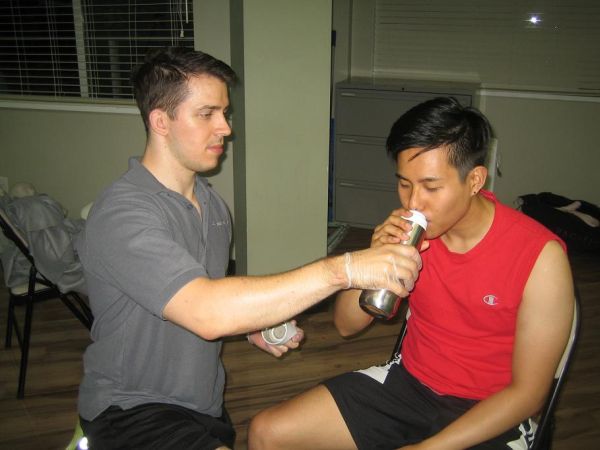Dehydration in children is usually a result of a
combination of vomiting and diarrhea caused by a viral infection in the body. It is a known fact that water is essential to the body. Thus, when there is excessive loss of body fluids, mostly water, dehydration occurs. In dehydration, more water is moving out of the cells and eventually out the body than the quantity taken in.
Under normal conditions, the body loses water every day indifferent forms, including water vapor during expiration and water in urine, stool, sweat and tears. Salts are also lost along with sweat but in much smaller amounts. When excessive amounts of water are lost, the body may become unbalanced or dehydrated. Children are more prone to dehydration because they can lose more fluids rapidly.
Causes of Dehydration in Children
There are several causes of dehydration in children. If children are not able to replace the lost fluid from any of the following causes, dehydration occurs.
- Viral infections
- Rotavirus, Norwalk virus and adenovirus
- Bacterial infections
- Salmonella, E. coli, Campylobacter, Clostridum difficile, etc.
- Parasitic infections
- Giardia lamblia
- Excessive sweating from hot environments
- Certain diseases of the body such as, cystic fibrosis or celiac sprue
- In rare cases, increased urination
Symptoms of Dehydration in Children
Dehydration symptoms are usually the same for different kinds of causes. The most common signs and symptoms of dehydration include:
- Decreased frequency of urination
- For infants, three hours of no wet diapers
- For older children, eight or more hours without urination
- Urine is dark yellow or amber
- Sunken eyes
- Little or no tears when crying
- Dry or sticky mucus membranes (mouth or tongue lining)
- Sunken fontanels (soft spots) on the top of babies’ head
- Child is less active than normal or feeling lethargic (tiredness)
- Irritability (more crying and fussiness)
When to seek medical help:
Because infants and children become dehydrated faster, parents or caregivers must watch out for the following signs which could indicate that the child is severely dehydrated:
- Dry mouth
- High-grade fever (39°C or 103°F)
- Continued decreased frequency of urination or no urine at all (within the last four to six hours)
- Presence of blood in stool
- Severe abdominal pain
- Persistent vomiting (more than 24 hours)
- Extreme thirst
How to Manage Dehydration in Children

Dehydration in children can be managed at home simply by replacing lost fluids in the body. It is not always a medical emergency but to avoid complications, it should be treated promptly.Disclaimer: the following information is not be substituted as medical advice nor formal training. Enroll in Emergency Childcare First Aid to learn more about how to manage several medical scenarios involving children.
For infants up to one year old:
- For a breastfed child, nurse more often.
- If the child is bottle fed, give the baby the typical amount of fluid give
- If the child is vomiting, give smaller amounts but more frequently.
- If the infant is able to eat solid food, ensure that fluid is provided.
- An oral rehydration solution may be given but ask the pediatrician the specific type and quantity to use.
For children between one to eleven years in age with mild dehydration:
- Give fluids in smaller amounts but more frequently.
- Give warm soup, clear soda or an oral rehydration solution.
- Make sure that fluid is received in the body. Popsicles, ice chips and cereal mixed with milk may be given.
- In cases of severe dehydration in children, intravenous (IV) fluids may be required.

